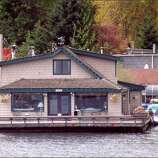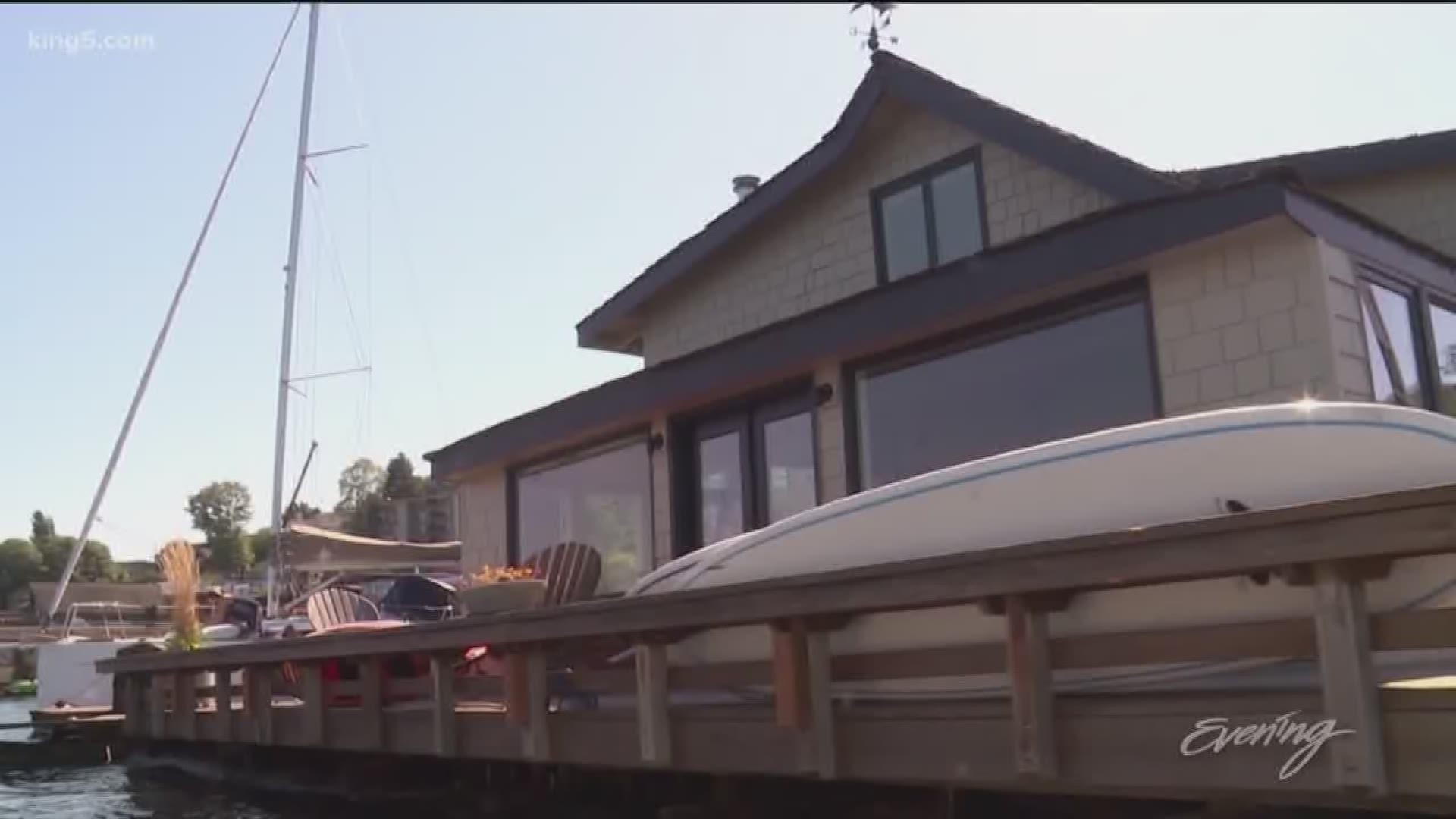

Still, Townsend wanted to add a little mess to give the space a sense of reality. We used a lot of muted colors-a little bit of a bland palette can contribute to that feeling of someone who has actually kind of moderated the look and feel of their home." The team used pale wood, beachy tones, and subtle, unobtrusive decor-a minimalist landscape painting in an oak frame, neutral cushions lining the sofa, a large black vase in the corner. "We didn’t want to be very heavy handed with it, but clean horizontal lines and angles that would make sense with the exterior architecture of the floating home.

"It has a very particular aesthetic that I thought spoke to the character," Townsend says. To create the look of the houseboat’s interior, Townsend and set decorator Clay Griffith stepped into the mindset of the grieving architect. Of course, aesthetics were important for Sam’s character. Still, he says, "We had a lot of fun making just a little bit nicer than the actual interior with some details that gave the impression that perhaps Sam had actually renovated it himself and put some of his aesthetic as an architect into the remodel."
ADDRESS SLEEPLESS IN SEATTLE HOUSEBOAT MOVIE
"Nora was really insistent on basing the movie in Seattle-and not for any reasons she could defend," says Townsend, who reportedly butted heads with the filmmaker during the project. This was, apparently, an unusual move, as most films are based in New York or Los Angeles for cost and convenience. The interior shots, meanwhile, were filmed on sets built at a nearby naval base. "I think it’s 2,000 square feet." (In 2014, a Seattle tech executive reportedly bought the Sleepless in Seattle houseboat for over $2 million.) "We looked at so many floating homes in Seattle and finally ended up in the biggest one there," Townsend says.

The exterior shots of Sam’s home were filmed on location at an actual houseboat in the area. It’s literally on water and moves a little bit with the tide." Of course, the eccentric residence also lent the film a sense of whimsy, offering a cinematic spot for a number of shots of Sam gazing wistfully off his deck at the horizon. "I don’t think Jeff Arch would be horrified for me to suggest that there’s something transient-feeling about a floating home. (Townsend notes the houseboat was part of the original screenwriter Jeff Arch’s vision.) "The trajectory was that you have an ostensibly successful architect in Chicago-big market, big skyscrapers, big windows-whose dreams shrink from grief," Townsend says. While the number and size of Seattle’s houseboat colonies has since dwindled, real estate brokerage Prevu estimates that communities on Lake Union and other Seattle waterfronts still have around 500 floating homes and 250 houseboats, some with coveted real estate priced in the millions.įor Jeffrey Townsend, the film’s production designer, a Seattle floating home was the perfect visual representation of Sam’s unmoored state in the start of the film as a grief-stricken widow fleeing the bustle of Chicago. By the late 1930s, Seattle’s houseboat population was said to be around 2,000.

In the 1920s, some of Seattle’s wealthy population built houseboats on Lake Washington as fancy summer homes. Tracing back to the late 1880s, sailors, fishermen, loggers, and dockworkers built low-cost floating shacks on the shores of the city’s various bays, lakes, and rivers using rafts and scrap boards. In real life, floating homes are deeply embedded in Seattle’s seaport history. Most of the film’s Seattle scenes take place at Sam and Jonah’s new place of living, a homey, wood-clad houseboat on Lake Union. When Annie hears Sam reluctantly discussing his grief on a radio show, she feels a profound connection and, against her better judgment, asks him to meet her on top of the Empire State Building on Valentine’s Day. The story follows Annie (Ryan), a newly engaged reporter from Baltimore, and Sam (Hanks), a recently widowed architect who moves from Chicago to Seattle with his son Jonah (Ross Malinger) after his wife’s death.


 0 kommentar(er)
0 kommentar(er)
